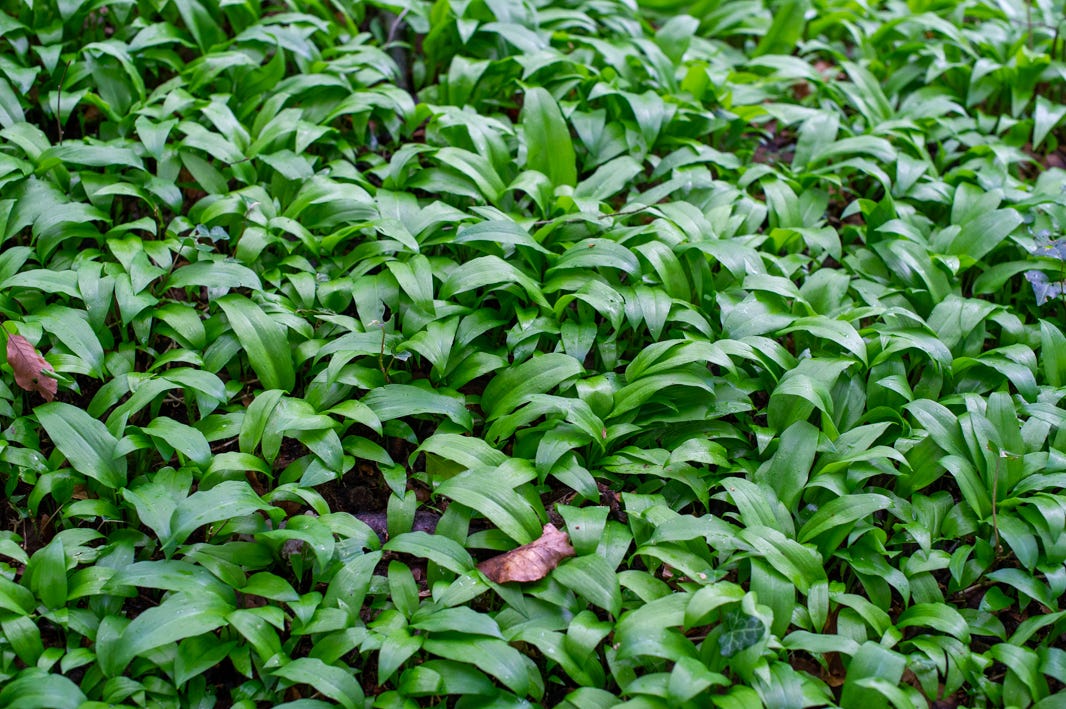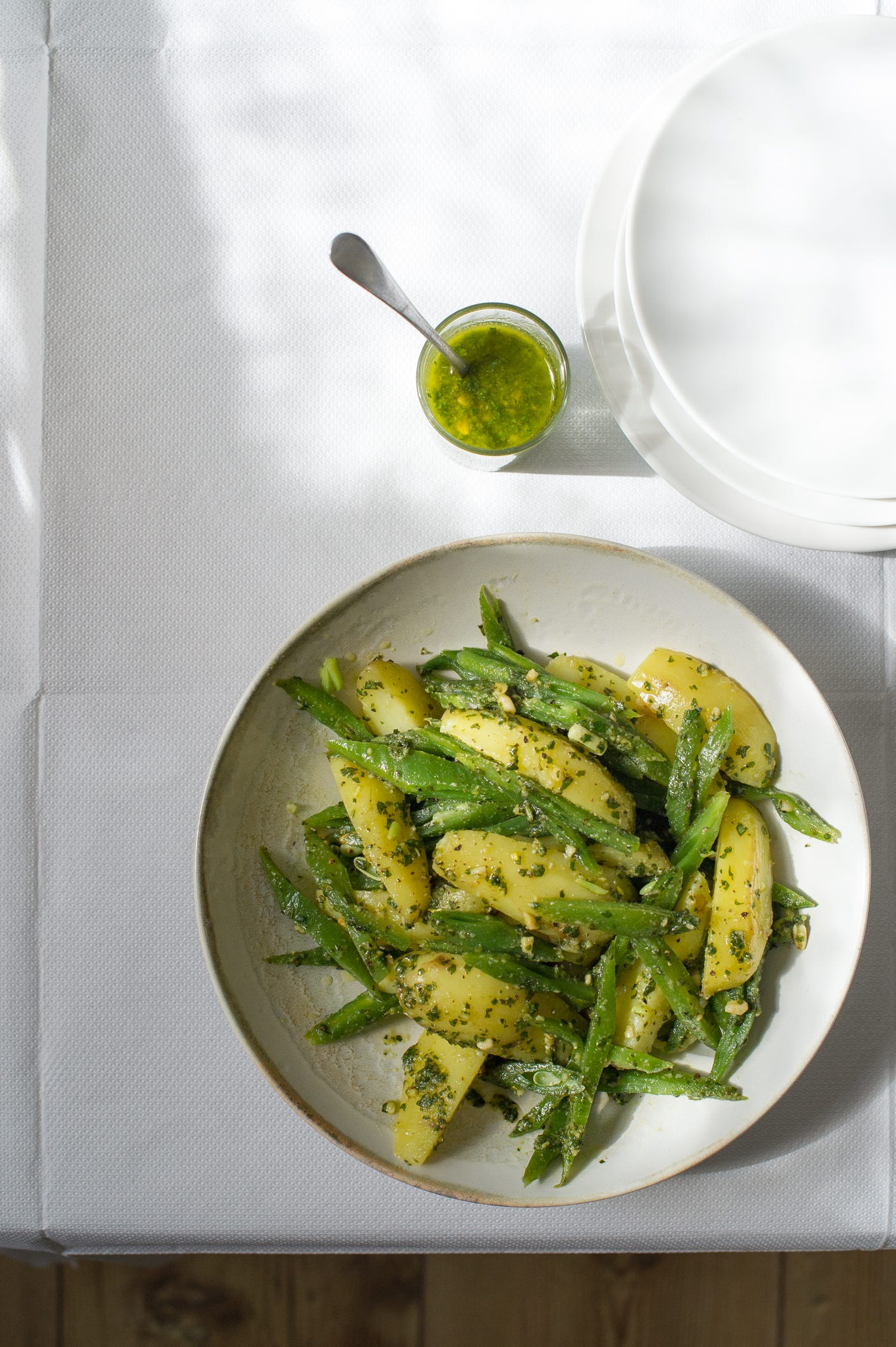If you look at Lake Como in Italy on a map, it resembles a skinny blue figure, striding west through the hills of northern Italy. When I was half the age I am and less unpleasant to look at, I sat in the crotch of that figure, able to see north into its watery torso, and southwest and southeast along each of its blue limbs. It was a good day.
I ate pasta pesto, alone, with a little too much lunchtime wine in the autumn sun. It remains the only time I can say that pasta with pesto has made me happy.
That said, with the sun and light just so in those perfect season-turning circumstances I suspect the slow braised underpants of a grizzly bear might’ve been gratefully received.
My pesto indifference is magnified many fold by wild garlic. So often made with excellent ingredients and too little care, wild garlic pesto is something I’d rather oil the cogs on my bike than eat. Until this week.
Last weekend was the first two day photoshoot: an enthusiastic picking left me with most of a carrier bagful of wild garlic taken from a slippery sloped beech wood a short drive from my home.
Rather than add it to the compost, I made a not-measured pesto - and was blown away by what I tasted. I thought I’d share it - in all its simplicity - while wild garlic is in season here in the UK.
The thing that makes this work so well in all its lack of complexity is that you are present. You don’t need exact measurements; it requires only that for a few short minutes your attention is nowhere else. The small details, and the attention to the what your tastebuds tell you, are the key ingredients here.
Pour an inch of olive oil and a very generous pinch of salt into the food processor, and squish perhaps a third of the wild garlic leaves in alongside the blades. A quick burst on low will reduce the leaves enough to be able to add the next third of the leaves for a quick burst, then the last third. At this point you should have a thick, coarse paste of the kind with which you might effectively repoint a wall.
Tip in 100g chopped hazelnuts (walnuts if you prefer) and set the processor on slow. In a thin stream, add more oil until you have a consistency approaching a pesto very much on the oily side.
Taste it: notice the first wave of flavour and add salt to suit this. Right at the end, when you think it’s done, you may be hit by a wave of what seems like rather too-peppery garlic - don’t worry, this will ease just enough over the coming hours as it mellows into the oil.
Add the juice of a lemon: this just brings the sauce to attention, rather than heavily acidifying.
Only now should you swizz it on high, and only just long enough to reduce the consistency to one where the fragments of oily stem don’t appear too substantial on the tongue. This is very important: setting the sauce on high earlier (or for too long now) batters the wild garlic not only into an unpleasing slurry of submission but also into releasing bitterness alongside that warm garlic flavour.
You’ll notice no black pepper in this recipe - this is to allow the heat in the garlic to get its elbows out unencumbered. And no pecorino/parmesan - I prefer the oil to bring the fat and leave the cheese to be grated over should you fancy: that way both the pesto and the cheese retain their individuality.
The result, a clean, bright, balanced pesto-ish sauce that goes as well with roasted vegetables as it does with slow roast lamb or with whichever pasta takes your fancy.
You could always take this base sauce and use it as a jumping off point for others: add stale bread and tweak for a picada; perhaps anchovies if you eat fish, mustard and more acidity for a salsa verde.
To my mind, this pesto - and regular pesto - is perhaps most happy making with this simple, perfect dish1 that can certainly sit as a main with excellent leaves to the side, or to accompany something meaty, fishy or vegetable, as you fancy.
Pesto, potato green beans
800g new potatoes, peeled and cut into even sized pieces
500g runner beans, trimmed and sliced (use green beans if you prefer)
A few very generous spoons of pesto
Cook the potatoes in plenty of boiling salted water for about 15 minutes until tender adding the beans for the final 5 minutes of cooking time. Remove from the heat, drain and keep warm.
Toss the pesto (more or less as you like) with the warm potatoes and runner beans and serve.
from my book HERB/ a cook’s companion









Next time, can we have a recipe for the slow braised underpants of a grizzly please?!
Love this Mark. I agree the pesto can be a beast if not attended to properly. I’m going to try it without the cheese some time, for sure. And those beans and potatoes, yes! So good with roast lamb…